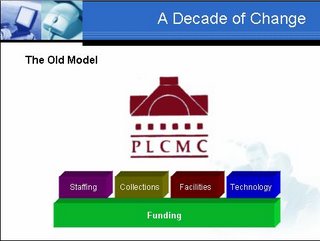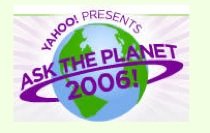And since this my first installement of Fab Friday, I'm going to highlight two innovative ideas today ...
 First – as I mentioned last week, PLCMC’s GetSet4K was one of 15 finalist for the SirsiDynix’s Building Better Communities award. And although PLCMC was not one of the award winners announced at ALA this past week, its place among the 15 finalists is an honor within itself. According to the announcement there were over 130 applicants for the award, so making it among the top 15 hails a salute in my book. I know there were many youth services staff who contributed to final result of the beautiful website. Some of them, like Melanie Huggins (former YS Director) have moved onto to bigger and better things, but I would remiss if I didn’t shout out and acknowledge Paul DeVillo for all the web development work and the entire PLCMC Youth Services Staff (esp Susan Pflugg, IMG and Alison Bauknight, SUG) for all the excellent content. The GetSet4K site contains a treasure trove of ideas and information about preparing pre-schoolers for that first day of Kindergarten. It's definitely a winner anyway you look at it!
First – as I mentioned last week, PLCMC’s GetSet4K was one of 15 finalist for the SirsiDynix’s Building Better Communities award. And although PLCMC was not one of the award winners announced at ALA this past week, its place among the 15 finalists is an honor within itself. According to the announcement there were over 130 applicants for the award, so making it among the top 15 hails a salute in my book. I know there were many youth services staff who contributed to final result of the beautiful website. Some of them, like Melanie Huggins (former YS Director) have moved onto to bigger and better things, but I would remiss if I didn’t shout out and acknowledge Paul DeVillo for all the web development work and the entire PLCMC Youth Services Staff (esp Susan Pflugg, IMG and Alison Bauknight, SUG) for all the excellent content. The GetSet4K site contains a treasure trove of ideas and information about preparing pre-schoolers for that first day of Kindergarten. It's definitely a winner anyway you look at it!Second – This event happened actually last December, but it wasn’t until just a few weeks ago that a video of the event made its way onto the Steele Creek Library & ImaginOn MySpace pages. Murder Mystery Night was an event at ImaginOn that was put together by the fabulous Teen Services staff. The video's a lot of fun and shows off both the creative side of staff and teens. Check out the great mug shots in the video of staff and the teens. Credits for the this innovative idea and film are found at the end of the short video. Take a look for yourself...
Get this video and more at MySpace.com
Way to go Teen Services! Can’t wait to see the video from the next Murder Mystery event! :)
Be on the lookout next week for another Fab Friday Salute. And PLCMC staff, if know of an innovative idea or use of technology that worth highlighting, drop me an email or add it to the comments.
Happy Friday Everyone!!
Technorati Tags: PLCMC, Fab Friday Salute





